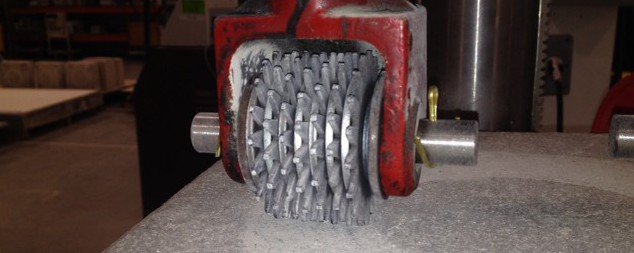Does Parylene Prevent Abrasion Damage?
Posted by Sean Horn
Friday, July 6, 2018 7:30
@ 7:30 AM
Unlike liquid coatings – acrylic, epoxy, silicone and urethane – parylene (XY) does not use wet method application. It can neither be brushed or sprayed onto substrate surfaces, nor will immersion – soaking the substrate in a bath of coating material – work. In addition, XY’s:
- high molecular weight (~500,000) combines with its
- commensurately high melting temperatures and crystallinity,
- to prohibit coating formation by other conventional methods
- such as extrusion or molding.
Parylene conformal films also cannot be formed by casting, due to low solubility in organic or other media, except at temperatures exceeding 175° C.
Because of these properties, and the specialized application methodology required to create XY conformal coatings, parylene provides exceptionally reliable abrasion resistance in most cases.

XY relies on a unique chemical vapor deposition (CVD) method of coating application. Depositing a film via CVD results in superior conformity compared with other deposition techniques, primarily because of the distinctive chemical interactions between the surface and the reactive compounds. Vaporized, the gaseous dimer is introduced into a vacuum chamber containing the assemblies to-be-coated. These may be printed circuit boards (PCBs), implantable medical equipment, backplanes, MEMS/nano devices, motor components, sensors or optical lenses, among a wide and proliferating range of products.
Unlike liquid coatings, which are pre-synthesized prior to application, XY synthesizes during CVD, attaching onto, and within, substrate surfaces. During CVD:
- The polymer is vaporized into small segments,
- then pyrolized into a monomer as it enters a vacuum chamber containing the assemblies designated for coating.
- XY monomers connect into chains creating polymers both on the surface of the substrate material and within as well.
Thus, rather than offering simply surface conformal protection, parylene penetrates the substrate surface, generating additional security. Room temperature formation means the coatings are effectively stress-free, adding to the film’s abrasion resistance. XY’s excellent mechanical properties, and ability to withstand abrasion, begin with CVD.
The result is perhaps the strongest, most resilient of all commonly used conformal coatings. It is not true that once applied, XY is essentially indestructible, but parylene resists most normal types of abrasion. Chemically inert, and with a broad temperature range, it unlikely to corrode, despite micro-thin film coverings for many uses; protected above and below a substrate’s surface, XY coatings withstand persistent marring, scuffing, scratching, or other instances of rubbing away/wearing down, generally for the life of the assembly.
Once deposited, parylene impact resistance is high. Compared to the other coatings, XY conformal films are generally less than 2 millimeters (mm.) in thickness, averaging between .10 – .50 mms for many uses. The different types of parylene coatings — N, C, D, F, etc. – vary somewhat in chemical structure and functional properties, but all possess very high dielectric strength (5500-7000 volts/mil), withstanding the effect of solvents while resisting abrasion, enhancing the film’s performance. In addition,
- XY may be annealed to increase cut-through endurance,
- coating hardness, and
- overall abrasion resistance.
This is the result of polymer density and an increase in crystallinity.
Measured against wet coatings, XY conformal films offer high tensile and yield strength. This includes a physical hardness greater than epoxy or urethane, adding rigidity to a fragile component, while reducing the impact of operational vibration. Despite XY’s substantial wear resistance, persistent, prolonged use in applications characterized by repeated abrasion with harder materials is not recommended.
And remember, XY does not last forever. It can be removed if necessary. For instance, parylene conformal films can be removed by exposure to ongoing, extreme heat, although this process risks damaging components underneath. More effective removal methods are mechanically-based, requiring instruments of persistent, gentle micro abrasion for optimal results. Although effective, this method is costly and time-consuming. It should be noted, that XY’s chemical inertness, a basic property, shuts down chemical removal in the vast majority of cases, causing the need for thermal or micro-abrasive removal techniques.
The difficulty of removal combines with the need for specialized removal techniques, are indicative of parylene’s exceptional abrasion resistance.
To learn more about different properties of parylene, download our whitepaper now:
Download our guide on Parylene 101
Comments
Homepage 4/17/2020. 10:17:10 AM
... [Trackback] [...] Informations on that Topic: blog.paryleneconformalcoating.com/whats-the-difference-between-potting-and-conformal-coating/ [...]

londondrugscanada.bigcartel.comlondon-drugs 4/17/2020. 10:17:10 AM
cialis uk https://londondrugscanada.bigcartel.com/london-drugs This is nicely expressed. !